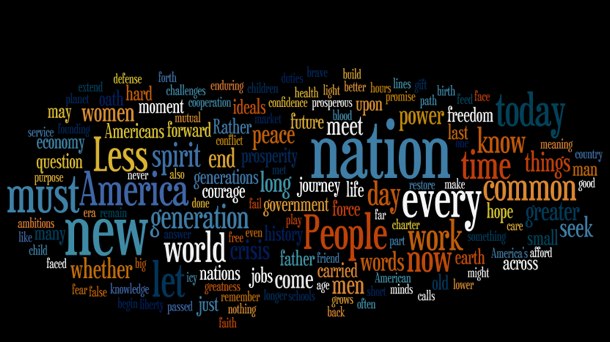ReadWriteWeb had an interesting post showing word clouds generated from Barack Obama’s inauguration speech.

But what are word clouds, and how are they useful? Word clouds visually represent the frequency or importance of a word in a given text. In President Obama’s speech, we can see from the cloud that he used words like “nation”, “new”, and “people” fairly often. You can use them to compare to texts in in a sort of qualitative way – does one text have a much sharper distribution than the other?
I would say that most of the time their primary purpose is aesthetic. I’m not convinced people really use them for anything other than as nice design elements – thought I think they have untapped potential. That’s why I created the Tag Altocumulus WordPress Plugin, to try to integrate tag clouds into a site’s navigation system in a way that’s actually useful.
To generate the clouds they used Wordle, a very cool site that lets you create your own word clouds from any text. Wordle gives you options on color, font, and orientation and you can end up with some pretty nice looking clouds. I went ahead and generated one from my paper on Tagging and Searching:
It does look pretty cool. Wordle also will generate a cloud from any site with an RSS feed. Here’s the cloud for my site:
Drop me a note in the comments below if you make one for your site or find an interesting text to use.

